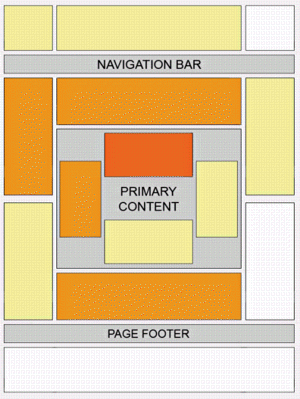Hey Dave, I get ~130.000 views per month and for 30 days of using AdSense I earned $60, is it a lot or not? I used to ask my visitors to click the ads, but after that I got a warning from Google, so I stopped, hehe.
That’s probably the single most common question I see related to Google AdSense, actually. The whole “are my earnings typical” query, and since Google doesn’t make this information available, it’s darn hard to know how to answer it. If you have colleagues or friends also running adverts on their Web sites, you can compare, but even then if you aren’t writing about the same subjects and have comparable ad placement, it’s not going to be a valid comparison anyway.
Worse, you’re not actually supposed to share your AdSense results with anyone else if you read the terms of service closely. So those sites that show you AdSense reports to demonstrate how they have a magic formula to make you millions if you just pay $97 for their report? Yeah, it’s another reason that they’re questionable, at best.
You did share your basic results so let’s do a bit of basic math on the numbers. If you got 130k views and earned $60.00, we can divide by 1000 and get your “effective CPM”, as a rough figure, at least: $0.46 eCPM. Is that low? It depends on three really critical factors:
1. Ad Placement — perhaps the single biggest factor that affects your results is whether you place your AdSense ads (or other ads if you’re with a different network) front and center, “impossible to miss”, or whether you’re more discrete and have it off to a side, perhaps below all the good content, or even lost below the fold in the navigational column.
There’s a direct correlation between making sure your readers must see your ad if they’re consuming your content and having good earnings for all those ad impressions.
In fact, on the right you’ll see a graphic I — cough — liberated from the AdSense site that highlights the critical importance of placement.  It’s a “heat map”: the darker the color, the better Google believes you’ll do with your ad block. Notice also that they show blocks, not text link units. Common sizes perform best because there’s the most (read “highest paying”) ad inventory for them.
It’s a “heat map”: the darker the color, the better Google believes you’ll do with your ad block. Notice also that they show blocks, not text link units. Common sizes perform best because there’s the most (read “highest paying”) ad inventory for them.
2. Traffic Sources — the next important question is: where does your site traffic originate? Most advertisers pay for specific countries in their ad buys so if you have tons of traffic from, say, Eastern Europe or Pakistan then even if they click on the adverts, you’re not going to get paid.
There are a couple of reasons for that, actually, only one of which is to do with advertiser preference. The other, sorry to report, is that there’s a whole lot of click fraud that originates in certain regions of the world and Google has learned to ignore those clicks based on the assumption that they’re not because the person’s actually interestsed in what’s being advertised but might be getting a penny for each click or paid $3/hr to click and click and click. Not good.
3. Focus Topic — the third major variable is your topic. If you’re writing about ways to deal with a DUI (driving while under the influence of alcohol or drugs) you can easily imagine that the site would attract valuable ads for DUI attorneys who can help readers defend themselves in court. Those are actually super valuable because each client is worth thousands of dollars to a lawyer.
Conversely, if you’ve a site focused on free math sheets for middle school students, even the best ad placement in the world isn’t going to match valuable ads to your content. And even then, the chances that there’ll be something advertised that catches a visitor’s attention and causes them to click on the ad to learn more? Very low too.
This doesn’t mean you should explicitly pick a topic to maximize your revenue, just to recognize that if you’re doing poorly with all three of these factors, that $0.46 eCPM might be terrific. And if you’ve a great design, superb high value content and are getting valuable ads but earning that same rate then you have a problem, I’d say.
The watchword with online advertising is to start and end with great content that excites and inspires readers so that they want to share it on Facebook, Google Plus, Twitter, their blogs, etc. And to click on the advertisers on the site not because you’re telling them too (a direct violation of their terms of service, as you learned) but because they’re learning useful stuff and the ads are a great match and really are advertising helpful content.
Hope that helps you out. Stick with it, focus on good content and good placement, and you’ll be moving that revenue mark up the charts in no time!

Thank you very much for your topics, it helped me too much in my site
http://www.egycar.net
Thank you again
D’oh! My mistake. Sorry.
Pete, Microsoft doesn’t have an AdSense program, so I’m not sure I follow your comment. AdWords is the “advertiser” side of the equation: if you want to publish an advert for your store or Web site, that’s how you’d do it. AdSense, by contrast, is what us publishers used to have ads from Google’s advertising partners (e.g., via AdWords) show up on our pages. Make sense?
Another excellence from Dave!!!!
Good, helpful information. But the questioner asked about (Microsoft) AdSense and you seem to have answered about (Google) AdWords.